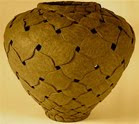
“September 11 provides ample opportunity for poets to diminish their ethical standing by generalizing. Again, like the experience of being in a foreign country and noting sights, some poets who observed the devastation (either in person or through media) felt that describing it, culminating in an insight about terror, pain, or destruction, justifies their poems. I have a file of poems replete with images of burning towers, people falling or jumping out of them, fiery planes, and smoke-and-paper-filled streets. Most of these poems are unsatisfying because they merely repeat clichés; moreover, I find many ethically repugnant because of the ease with which they presume to describe the pain of others. The poet is making art out of others’ suffering without any risk or consequence to himself or herself. As Susan Sontag says, ‘No “we” should be taken for granted when the subject is looking at other people’s pain’; ‘what matters precisely is who is killed and by whom.’ By glibly generalizing what should be an individual memory, these poems fail morally and aesthetically. ‘It is intolerable to have one’s own suffering twinned with anybody else’s,’ notes Sontag, a presumption that mars many 9-11 poems. Living in New York or being in the towers does not guarantee a good 9-11 poem, neither does having a relative who died, nor being Arab-American. Sontag writes, ‘a narrative seems likely to be more effective [in conveying pain] than an image. Partly it is a question of the length of time one is obliged to look, to feel.’ Sometimes the 9-11 poems fail because their treatment is too glancing: the poet hasn’t gone far enough to understand his or her true subject and reveal something new about it.
“Wislawa Szymborska’s poem ‘Photograph from September 11’ (translated by Clare Cavanaugh) acknowledges the speaker’s inability to describe and, in my mind, is successful. She begins with a common image to such poems, ‘They jumped from the burning floors—’ but then immediately reminds us that she is only looking at a photograph. She tells us that ‘Each is complete / with a particular face / and blood well-hidden,’ and ends by saying, ‘I can do only two things for them— / describe this flight // and not add a last line.’
“Not adding a last line (although, of course, she does: ‘and not add a last line’) indicates Szymborska’s understanding of her inadequacy, of art’s inadequacy in the face of horror. She notes ‘the particular face[s]’ she does not have access to. Even the title acknowledges her limited access and understanding. She does not presume to speak from authority. While she does imagine the flight, the poem is ultimately about the speaker’s own inability to describe it fully. It is her stance of unknowing that permits her to repeat familiar images.” —From “Poetry & Ethics: Writing About Others” by Natasha Sajé in
The Writer’s Chronicle (December 2009: Volume 42, Number 3)
 “After a certain period, the poem seems to have no maker at all. Poems gather their own momentum and you feel they’re moving on their own. You are part of the world in which they are born and come to maturity, but they have an identity beyond the person to whom they are confiding because the poem doesn’t really belong to anyone, it belongs to a great tradition. The great tradition includes what I think of as the essential spirit of the poem, which belongs to centuries, and not to any single moment in time.
“After a certain period, the poem seems to have no maker at all. Poems gather their own momentum and you feel they’re moving on their own. You are part of the world in which they are born and come to maturity, but they have an identity beyond the person to whom they are confiding because the poem doesn’t really belong to anyone, it belongs to a great tradition. The great tradition includes what I think of as the essential spirit of the poem, which belongs to centuries, and not to any single moment in time.





